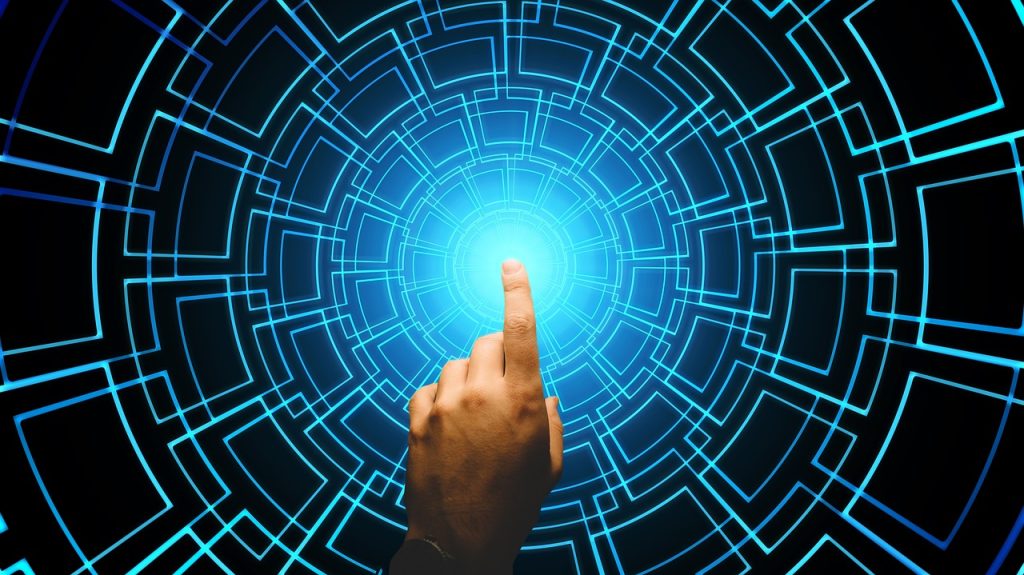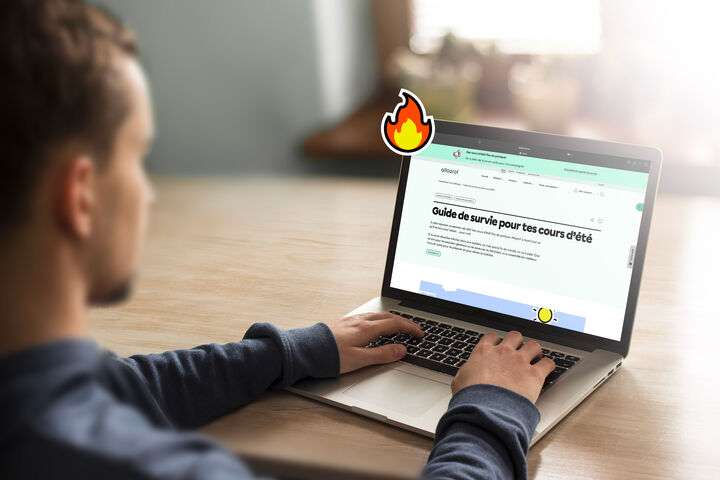Par Fabienne Serina-Karsky, Institut catholique de Paris (ICP) et Gabriel Maes, Institut catholique de Paris (ICP)
L’introduction d’une nouvelle technologie soulève en général des réactions très tranchées, entre accueils enthousiastes et réticences tenaces. L’intelligence artificielle (IA) n’échappe pas à la règle et suscite des dilemmes. Cependant, plutôt que de se demander s’il faut l’accueillir ou la bannir du système éducatif ne faudrait-il pas avant tout partir du postulat d’éducabilité cher à Philippe Meirieu et se demander comment accompagner chaque apprenant vers les apprentissages qui lui sont nécessaires pour trouver sa place dans le monde de demain ?
Reposons alors ainsi la question : « comment intégrer l’IA dans nos cursus scolaires pour mieux accompagner chaque apprenant vers l’excellence qui lui est propre ? » Compte tenu de l’évolution constante de la technologie, il est essentiel de peser les préoccupations soulevées par l’utilisation de l’IA, mais aussi de voir comment celle-ci pourrait favoriser l’accès à une éducation de qualité en réinterrogeant les pratiques pédagogiques et la posture de l’enseignant, s’inscrivant ainsi dans une révolution des méthodes d’enseignement vieilles de plus d’un siècle.
L’émergence de l’intelligence artificielle (IA) dans le système éducatif est une arme à double tranchant. D’une part, l’IA peut être utilisée comme un outil efficace pour aider les élèves et les étudiants en leur fournissant du matériel d’apprentissage personnalisé et un retour instantané sur leurs travaux. D’autre part, si l’IA est utilisée sans précaution, elle peut avoir des effets néfastes sur leurs performances et leur préparation au marché du travail.
L’exemple récent de ChatGPT nous montre que certains établissements l’ont interdit de crainte que cet outil facilite la triche et entraîne une baisse des normes académiques, alors que d’autres l’ont accueilli dans leur salle de cours tant il leur semblait impossible de lutter contre ces technologies – et mener une guerre perdue d’avance. Les deux positions se défendent. Les établissements ayant bloqué l’accès à ces technologies ont bien conscience que, si le travail d’un apprenant est relégué à 100 % à la technologie, il n’y a plus ou peu d’apprentissages, qui plus est à une période clé du développement des adolescents.
Cependant, cette interdiction s’est avérée relativement inefficace, les étudiants la contournant aisément par l’utilisation des connexions 4G de leurs téléphones portables, donnant ainsi raison aux partisans de leur intégration. Comment, dès lors, peut-on accompagner les apprenants, mais aussi les enseignants au mieux aux usages des IA ?
Des cadrages institutionnels
La Commission européenne réfléchit depuis plusieurs années à l’intégration du numérique dans l’éducation, de l’élémentaire jusque dans l’enseignement supérieur. Afin de s’assurer que les enseignants et les étudiants bénéficient du potentiel de l’IA pour l’apprentissage, elle a publié les lignes directrices pour une utilisation éthique de l’IA et des données dans l’éducation et, le 30 septembre 2020, elle a ainsi approuvé le plan d’action pour l’éducation numérique 2021-2027. Ces lignes directrices ont pour but de fournir un soutien à tous les niveaux – qu’il s’agisse de l’enseignement ou des tâches administratives qui y sont associées – afin que chacun puisse bénéficier d’une expérience d’apprentissage optimale.
En Amérique du Nord, la Fédération nationale des enseignantes et enseignants du Québec nous donne un exemple de la manière de se saisir de la question.
En France, fin janvier 2022, le ministre de l’Éducation nationale Pap Ndiaye a présenté une stratégie du numérique pour l’éducation 2023-2027 dont le but est de renforcer les compétences numériques des élèves et d’accélérer l’usage des outils numériques pour la réussite des élèves. Les différents axes et mesures sont présentés dans un rapport de 41 pages qui développe notamment les points d’une offre numérique « raisonnée, pérenne et inclusive » au profit d’une communauté éducative et pour « permettre aux élèves de devenir des citoyens éclairés à l’ère du numérique ».
La réflexion engagée s’inscrit bien au-delà du cadre de l’école ou de l’université et demande la mobilisation de tous les éducateurs, parents, enseignants, pour accompagner les nouvelles générations dans les usages de ces technologies qui viennent bouleverser les usages pédagogiques notamment dans le cadre de l’école et de l’université.
Le tournant ChatGPT
La technologie ChatGPT, qui fait la une des journaux depuis son lancement le 30 novembre 2022, est désormais connue de tous. Nombreux sont les collégiens, lycéens et étudiants qui ont tenté de déléguer leurs devoirs à l’IA. Et nombreux sont les enseignants ayant fait part de leur impuissance, tant il est difficile de détecter si une rédaction est rédigée par un élève ou par l’IA, et ce d’autant plus qu’il est possible de demander à ChatGPT d’adapter la rédaction en fonction du statut, qu’il s’agisse d’un collégien ou d’un étudiant préparant un mémoire par exemple.
OpenAI, la société ayant conçu ChatGPT, et d’autres, ont promis de produire des scripts permettant de différencier la rédaction humaine et celle rédigée par l’IA. Aujourd’hui, cela fonctionne assez bien sur des textes en anglais. Cependant, sur la dizaine de tests que nous avons effectués sur des textes français avec un logiciel de détection de plagiat, les résultats montrent que, sur les textes rédigés par une IA, dans 60 % des cas, le logiciel détecte bien l’IA et donc dans 40 % des cas, il pense que c’est un être humain.
Par ailleurs, nous avons pu également constater que, pour les textes générés par l’IA, il suffisait de remplacer deux ou trois mots dans chaque phrase pour que le logiciel de contrôle pense que la rédaction provient d’un être humain. Les seules alternatives qui fonctionnent à ce jour et qui s’imposent aux enseignants sont les évaluations écrites sur table, sans accès Internet, et les évaluations à l’oral. Cependant, les universités n’ont pas tous les moyens techniques et/ou logistiques d’organiser tous les examens en présentiel. Et l’évolution des IA est exponentielle.
Ces transformations questionnent l’évaluation des compétences et pourraient conduire à ébranler la crédibilité des diplômes. On peut alors penser que les recruteurs ne se contenteront plus des reconnaissances universitaires et ajouteront des tests diagnostiques pour vérifier les aptitudes revendiquées par le CV du candidat. Cela inciterait les étudiants à se concentrer sur l’acquisition de compétences et à cesser de se focaliser sur les notes. Le développement des IA nous inciterait-il à envisager autrement l’école ?
Une révolution copernicienne
Le psychologue suisse Édouard Claparède, dès le début du XXe siècle, parle d’enclencher une révolution copernicienne pour reconnaitre à l’enfant sa capacité à être acteur de sa formation. L’éducateur ne serait plus alors un « enseigneur » mais un « renseigneur », pour reprendre les mots de Roger Cousinet, inspecteur français participant, aux côtés notamment de la célèbre Maria Montessori, à ce mouvement international de l’Éducation nouvelle qui se fédère en 1921 avec pour objectif de transformer l’éducation.
L’innovation pédagogique s’invite alors à l’école par différents outils et méthodes non plus basés sur un enseignement magistral et identique pour tous, mais sur un apprentissage basé sur les capacités propres à chaque élève. C’est l’école inclusive avant l’heure. En partant de ce qui fait sens pour l’enfant ou le jeune, l’enseignant lui apporte les éléments dont il a besoin pour construire son projet, et pense l’évaluation autrement.
Or, pour faire face aux risques des nouvelles technologies et à l’avalanche d’informations désormais à la portée de tous, repenser le rôle de l’enseignant semble être l’un des facteurs clés. À cela s’ajoute le défi de l’école de demain d’intégrer les nouveaux savoirs nécessaires pour l’éducation du futur, parmi lesquels le philosophe Edgar Morin identifie entre autres la connaissance des connaissances, l’incertitude, l’erreur, comme autant d’éléments clés.
Face à la masse de connaissances en accès libre et avec l’IA qui permet désormais de les utiliser à plus ou moins bon escient, l’éducation à la recherche d’information et à leur utilisation à bon escient est l’occasion de sensibiliser les apprenants au sens que chacun peut tirer du fait d’apprendre. En conclusion, il apparait urgent de développer l’esprit critique et de s’interroger sur la façon dont l’école peut se saisir de ces nouveaux défis pour poursuivre cette révolution copernicienne en s’appuyant sur les nouveaux outils qui ne manqueront pas de voir le jour.
Par Fabienne Serina-Karsky, maître de conférences HDR en Sciences de l’éducation, Institut catholique de Paris (ICP) et Gabriel Maes, ingénieur pédagogique et formateur, Institut catholique de Paris (ICP)
Cet article est republié à partir de The Conversation sous licence Creative Commons. Lire l’article original.






